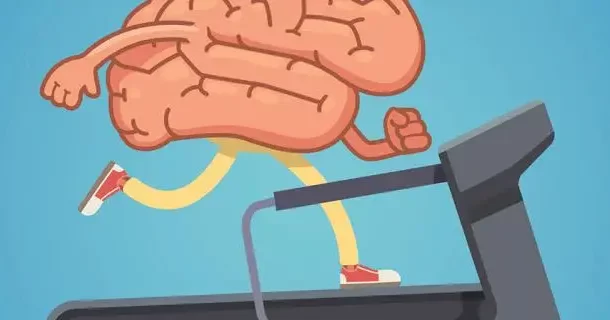While attending a three-day special education workshop, the book, Spark: The Revolutionary New Science of Exercise and the Brain, was recommended to me on the basis that it provides incontrovertible evidence that exercise can help all students—especially special education students—improve in school. At a time when recess and physical education programs are being cut for test prep, I knew this was information worth having and sharing.
Exercise Can Improve Learning
Written by Dr. John J. Ratey, an associate clinical professor of psychiatry at Harvard Medical School, the book explores the connection between exercise and the brain, providing strong evidence that aerobic exercise physically remodels the brain for peak performance on all fronts. Specifically, Dr. Ratey writes that exercise improves learning on three levels: “First, it optimizes your mind-set to improve alertness, attention, and motivation; second, it prepares and encourages nerve cells to bind to one another, which is the cellular basis for logging in new information; and third, it spurs the development of new nerve cells from stem cells in the hippocampus.” In short, not only does exercise help the brain get ready to learn but it actually makes retaining information easier.
A suburban school district outside of Chicago is proving this point. The Naperville, Illinois district implemented an early morning exercise program called Zero Hour, which sought to determine whether working out before school gives students a boost in their reading ability and other subjects. Since introducing this program, the district has seen remarkable results in both wellness and academic performance.
Naperville’s philosophy was to teach kids how to monitor and maintain their own health and fitness—a lifestyle skill with enormous long-term benefits. In fact, across the country, research shows students with higher fitness scores also have higher test scores. Physical activity has a “positive influence on memory, concentration, and classroom behavior.”
Exercise Can Improve Students’ Mental Health
Dr. Ratey’s research also shows that exercise can be the best defense against a lot of the common mental health issues that students struggle with.
Stress
Our students face enormous stress in the classroom and in their lives, including peer pressure, work overload, and high stakes testing. Exercise controls the emotional and physical feelings of stress, and it also works at the cellular level. Physical activity is a natural way to prevent the negative consequences of stress because it can ward off the ill effects of chronic stress and actually reverse them. In addition, studies show people who add physical activity to their lives become more socially active, which boosts confidence and helps establish and maintain social connections.
Anxiety and Panic Disorders
Dr. Ratey defines anxiety as a natural reaction to a threat, but worrying when there’s no real threat, to the point where one can’t function normally, is an anxiety disorder. Panic is the most intense form of anxiety, and I’ve witnessed my students having panic attacks during tests and cooperative learning situations, or sometimes just from the general pressures of school.
Spark points out that the majority of studies show aerobic exercise significantly reduces symptoms of anxiety disorders. Through exercise, people learn to alleviate anxiety and rebuild their confidence. Dr. Ratey points out that exercise reroutes the brain’s circuits, reduces muscle tension, and teaches a different outcome to an anxiety-provoking situation, ultimately setting an anxious person free from their worrisome tendencies.
Depression
Aerobic exercise is known to have a positive impact on depressive symptoms. Studies suggest that endorphins produced in the brain during exercise contribute to a general feeling of well-being. Exercise also boosts dopamine, which improves mood and jump-starts the attention span. Thirty minutes of moderate exercise a few days a week can do wonders for students who suffer from depressive moods.
ADHD
School can be an especially excruciating environment for students with attention deficit hyperactivity disorder (ADHD) because of the need to sit still, face forward, and listen. Dr. Ratey says structured exercise—in the form of martial arts, ballet, skateboarding, or gymnastics, for example—is one of the best treatment strategies for ADHD.
The combination of challenging both the brain and body is even better than just aerobic activity alone because the technicality of those sports activates brain areas that “control balance, timing, sequencing, evaluating consequences, switching, error correction, fine motor adjustment, inhibition, and, of course, intense focus and concentration.”




